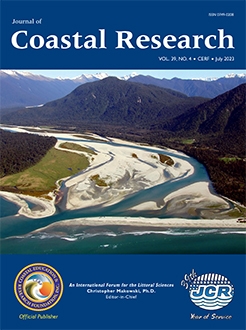Stalter, R. and Lonard, R.I., 2023. Biological flora of coastal freshwater and brackish marshes: Cladium jamaicense Crantz. Journal of Coastal Research, 39(4), 763–776. Charlotte (North Carolina), ISSN 0749-0208.
Cladium jamaicense Crantz, also known as sawgrass, has a broad distributional range from the Atlantic coast of Virginia to Florida, to southern Texas, the Caribbean, and along the Atlantic coast of Mexico to Central America, and to Brazil. Cladium jamaicense typically occurs in oligotrophic sloughs and fresh and brackish marshes where optimal salinity values range from 0 to 3.5 ppt. This species is a long-lived perennial with a highly developed rhizome system with rhizomes up to 20 cm long and 2.5 to 10 mm in diameter. Asexual reproduction is common. Its fibrous root system comprises short dauciform roots characterized by a dense number of long root hairs. Culms are 1.0 to 3.0 m tall. Leaf blades are coarse, flat, or broadly involute; leaf margins and the abaxial midvein have sharp, hacksaw-like teeth. Typha domingensis (cattail) is C. jamaicense's most important competitor, especially in sites that have been enhanced with phosphorus. Restoration of sawgrass marshes requires managing long-term changes in ecosystem functions and hydrological management strategies.





